When it comes to hiking with your furry friend, it’s important to make sure they have the right nutrition to keep up with the trail. As a dog owner, I know that choosing the right dog food for hiking can be overwhelming. With so many options available, it can be hard to know where to start.
First and foremost, it’s important to choose a food that is primarily meat-based, has a high protein content of 30% or greater, and has little to no grains. This will ensure that your dog is getting the energy they need to keep up with the trail. Additionally, it’s important to keep up with vet visits, vaccinations, and medication to make sure your dog is healthy and ready for the hike.
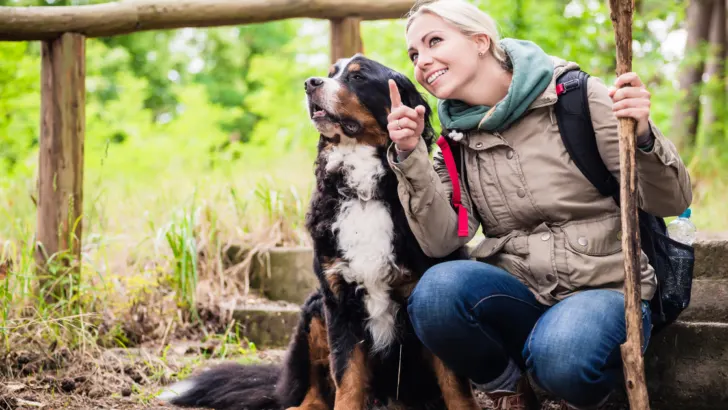
Choosing the right hiking dog food is just the first step. You also need to consider how to pack and prepare the food for the trail. It’s important to pack enough food for your dog based on its size and the length of the hike. You may also want to consider packing a water bowl and bringing extra water if you’re hiking in a hot climate. By taking these factors into consideration, you can ensure that your furry friend is well-fed and healthy on the trail.
Key Takeaways
- Choose a dog food that is primarily meat-based, has a high protein content, and has little to no grains.
- Pack enough food for your dog based on its size and the length of the hike.
- Consider packing a water bowl and bringing extra water if you’re hiking in a hot climate.
Hiking Dog Food
When I go hiking with my dog, I make sure to pack the right food to keep them healthy and energized throughout the trip. Here are some tips and guidelines I follow when choosing the best hiking dog food:
Protein and Fat Content
I look for dog food that has a higher percentage of protein and fat to maximize my dog’s energy. A balanced food should have a protein content of approximately 18-25%, fats should be in the 10-15% range, and carbohydrates should be around 30-50%. When long-distance backpacking with my dog, I want food that has a higher percentage of protein and fat to keep their energy levels up.
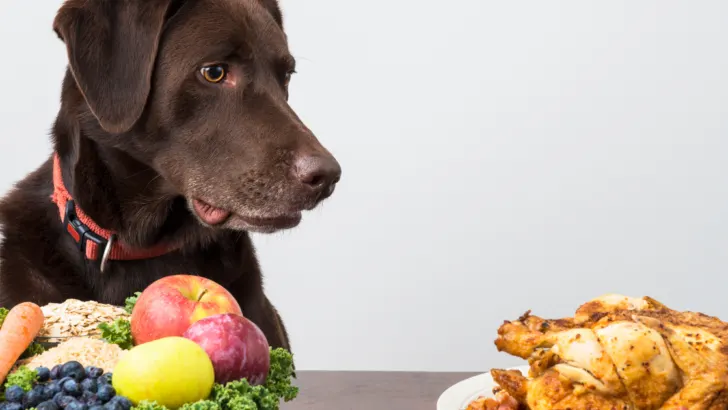
Food Type
There are different types of dog food available for hiking, including kibble, dehydrated, and freeze-dried. I prefer dehydrated or freeze-dried dog food because they are lightweight and easy to pack. I also like that they have a longer shelf life than kibble.
Homemade Treats
I like to make homemade treats for my dog to bring on hikes. Banana and peanut butter energy balls are a great option because they are easy to make and provide a quick burst of energy. I also make dehydrated dog treats that my dog can carry in their own backpack.
Water
I always make sure to bring enough water for my dog on hikes. I have a collapsible water bowl that I bring along, and I make sure to stop frequently to allow my dog to drink water.

Overall, choosing the right hiking dog food is important to keep my dog healthy and energized on our hikes. By following these guidelines, I can ensure that my dog has the right nutrition to keep up with me on the trail.
Choosing the Right Hiking Dog Food
When planning a hiking trip with my dog, I know that choosing the right food is essential to ensure my furry friend has the energy and nutrients they need to keep up with me. Here are some factors to consider when choosing the right hiking dog food.
Factors to Consider
When choosing hiking dog food, I consider my dog’s age, breed, weight, activity level, and any dietary restrictions. I also think about the duration of the trip and the weather conditions we will be facing.

Nutritional Content
A balanced hiking dog food should have a high percentage of protein and fat to maximize my dog’s energy. I look for dog food that has a protein content of approximately 18-25%, fats in the 10-15% range, and carbohydrates around 30-50%. I also make sure that the dog food has essential vitamins and minerals, such as Vitamin A, B, D, E, and Zinc.
Packability
When backpacking, I need to make sure that my dog’s food is packable and easy to carry. I look for dog food that comes in lightweight packaging and does not take up too much space in my backpack. I also consider dog food that can be rehydrated with water, saving space and weight.
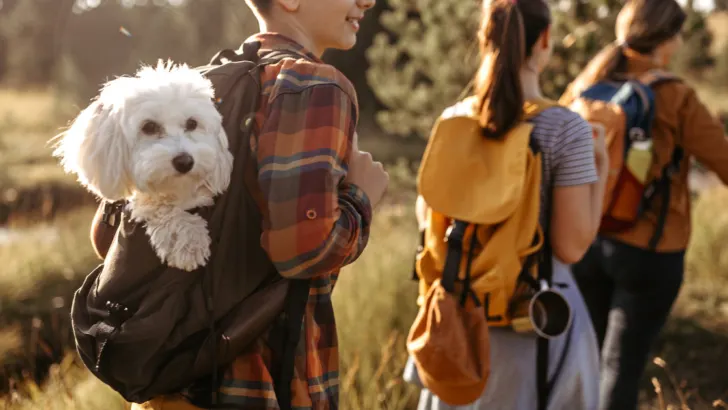
Taste
Finally, I know that my dog’s taste preferences are important. I choose a dog food that my dog enjoys and has good taste. I also make sure that the dog food does not cause any digestive issues or allergies.
In conclusion, choosing the right hiking dog food is essential to ensure my dog has the energy and nutrients needed for a successful hiking trip. By considering factors such as nutritional content, packability, and taste, I can find the perfect dog food for my furry friend.
How to Pack Hiking Dog Food
Pack Enough Food
When planning a hiking trip with your dog, it’s important to pack enough food to keep them well-fed and energized throughout the journey. A good rule of thumb is to pack what your dog would usually eat during the duration of the hike, and then increase the calorie intake by at least 50%. This will allow for maximum nutrition and energy for your dog.
It’s also important to consider your dog’s size and activity level when determining how much food to pack. Larger dogs and more active dogs will require more food than smaller or less active dogs. Be sure to consult with your veterinarian if you’re unsure how much food to pack for your dog.

Pack the Food Properly
Properly packing your dog’s food is just as important as packing enough of it. Here are some tips for packing your dog’s food for a hiking trip:
- Use airtight containers to keep the food fresh and prevent it from spoiling.
- Separate the food into individual portions to make it easier to feed your dog on the trail.
- Pack the food in a way that evenly distributes the weight in your backpack.
- Consider packing freeze-dried or dehydrated food, which is lightweight and easy to pack.
It’s also important to pack plenty of water for your dog. Bring a collapsible water bowl and offer your dog water regularly throughout the hike. On average, dogs consume between ½ ounce to 1 ounce of water per pound, per day. So, if your dog weighs 10 pounds, packing a 12-ounce water bottle should be enough to keep them hydrated for a day of hiking.
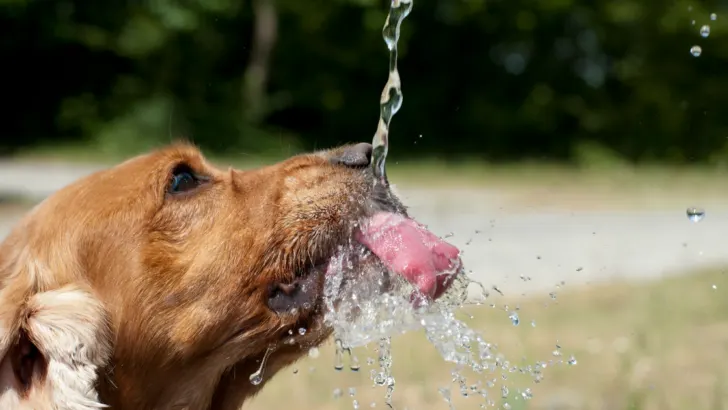
By packing enough food and packing it properly, you can ensure that your dog stays healthy and energized on your next hiking adventure together.
Other Hiking Dog Food Considerations
As a dog owner who enjoys hiking, I know that choosing the right food for my furry companion is essential to ensure a safe and enjoyable trip. In addition to the main meals, there are a few other food considerations to keep in mind when hiking with a dog.
Treats
Treats are an excellent way to reward your dog for good behavior on the trail. However, it’s important to choose treats that are healthy and easy to carry. High-calorie treats that are loaded with sugar or fat can cause digestive issues and weight gain. Instead, opt for natural treats that are low in calories and high in protein, such as jerky or dried liver.
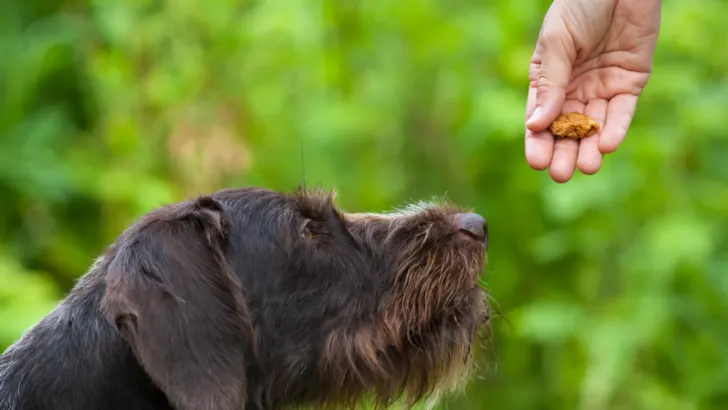
When packing treats, make sure to store them in a secure container that is easy to access. I like to bring a small ziplock bag that I can clip to my backpack for easy access.
Water
Keeping your dog hydrated is crucial when hiking. Dogs can get dehydrated quickly, especially in hot weather. Always bring enough water for your dog, and offer it frequently throughout the hike. A good rule of thumb is to bring one liter of water per 20 pounds of body weight.

To make carrying water easier, consider investing in a collapsible water bowl. These bowls are lightweight and can be easily packed in a backpack. Alternatively, you can use a plastic bag as a makeshift bowl.
It’s also important to be aware of natural water sources on the trail. Not all water sources are safe for dogs to drink from, as they may contain harmful bacteria or parasites. If you’re unsure about the safety of a water source, it’s best to err on the side of caution and offer your dog bottled water instead.
By considering these additional food considerations, you can ensure that your dog stays healthy and happy on your next hiking trip.
If You Are Hiking in a Hot Climate, You May Need to Pack More Water for Your Dog
When hiking in hot climates, it’s essential to pack enough water for yourself and your furry companion. Dogs can quickly become dehydrated, and it’s our responsibility to make sure they have enough water to stay hydrated throughout the hike.
As a general rule of thumb, dogs need at least one ounce of water per pound of body weight per day. However, this amount can increase significantly in hot weather, especially if your dog is active. So, if you’re planning a hike in a hot climate, you may need to pack more water for your dog than you would on a cooler day.
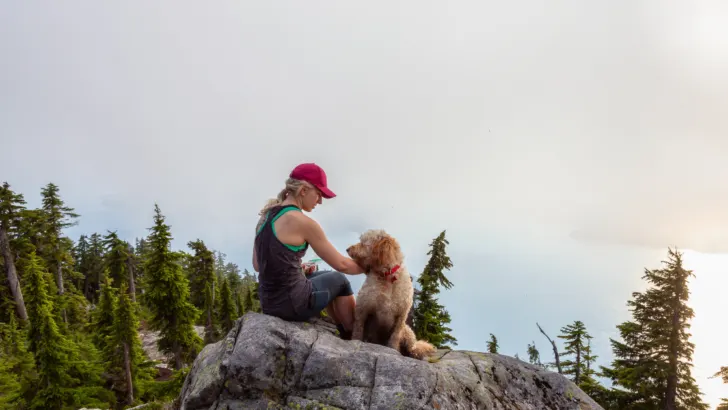
In addition to packing extra water, you should also consider bringing a collapsible water bowl for your dog. This will make it easier for them to drink and ensure they have access to water whenever they need it.
It’s also important to keep an eye on your dog’s behavior and look out for signs of dehydration. Some common symptoms include excessive panting, lethargy, dry gums, and sunken eyes. If you notice any of these signs, it’s crucial to stop and give your dog water immediately.
Overall, hiking with your dog can be a fun and rewarding experience, but it’s essential to take the necessary precautions to keep them safe and healthy. By packing enough water and keeping an eye on your dog’s behavior, you can ensure that they stay hydrated and enjoy the hike as much as you do.
You May Also Want to Pack a Water Bowl for Your Dog
When going on a hike with your dog, it’s important to keep them hydrated. Just like you, your furry companion needs access to water throughout the day. While it’s easy to bring a water bottle for yourself, it’s important to remember to pack a water bowl for your dog as well.
There are several options for portable dog water bowls that are perfect for hiking. Collapsible bowls are a popular choice as they take up minimal space in your backpack and can easily be clipped onto the outside with a carabiner. These bowls are also lightweight and easy to clean.
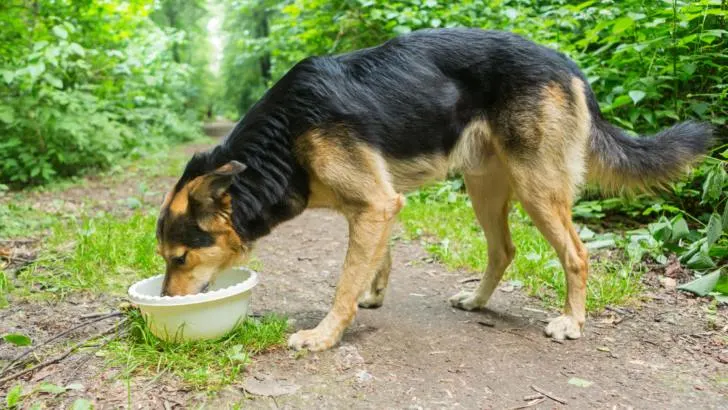
Another option is a dog water bottle with a built-in bowl. These bottles are designed to dispense water into a bowl for your dog to drink from. This is a great option if you want to avoid carrying around a separate bowl. However, it’s important to make sure the bottle is leak-proof and doesn’t spill water all over your backpack.
When choosing a water bowl for your dog, make sure it’s the right size for your dog’s breed and size. You don’t want to bring a bowl that’s too small or too large for your furry friend. Additionally, consider the material of the bowl. Some dogs may prefer a metal or ceramic bowl, while others may prefer a silicone or plastic bowl.
Overall, packing a water bowl for your dog is an essential item to bring on a hike. It’s important to keep your furry friend hydrated and healthy throughout the day. With the right bowl and a little bit of preparation, you and your dog can enjoy a fun and safe hiking adventure together.
If You Are Hiking with a Large Dog, You May Need to Pack More Food
When planning a hiking trip with your dog, it’s important to consider their size and energy needs. Large dogs require more food than small dogs, especially if they are active and hiking for long distances. As a general rule, a large dog needs about 30 calories per pound of body weight per day. So, if you have a 70-pound dog, it will need around 2,100 calories per day.
If you are hiking with a large dog, you may need to pack more food than you would for a smaller dog. It’s important to bring enough food to keep your dog energized and healthy throughout the trip. You don’t want to run out of food halfway through the hike, leaving your dog hungry and weak.
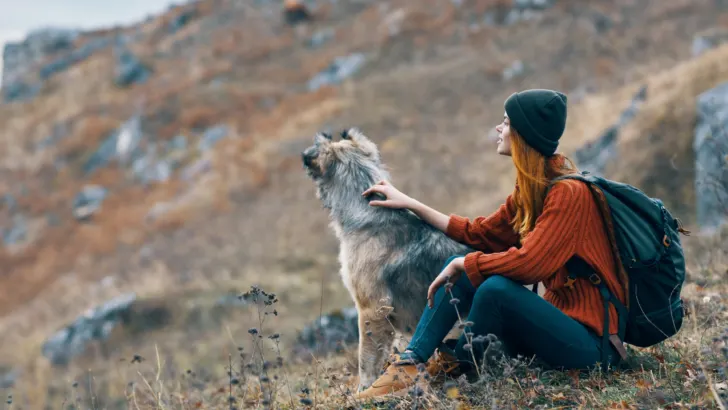
When packing food for your large dog, consider the following:
- Bring enough food for the entire trip, plus a little extra just in case.
- Choose a high-quality, nutrient-dense dog food that is appropriate for your dog’s age, size, and activity level.
- If your dog is used to eating wet food, consider bringing a few cans or pouches for the trip.
- Pack food in airtight containers to keep it fresh and prevent it from getting crushed.
- Bring a measuring cup to ensure you are feeding your dog the correct amount.
In addition to food, it’s also important to bring plenty of water for your dog. Large dogs need more water than small dogs, especially when they are active. As a general rule, a dog needs about one ounce of water per pound of body weight per day. So, if you have a 70-pound dog, it will need around 70 ounces of water per day.

Overall, hiking with a large dog can be a lot of fun, but it’s important to plan ahead and pack enough food and water to keep your furry friend healthy and happy throughout the trip.
You Should Always Bring a First-Aid Kit for Your Dog When You Go Hiking
As a responsible dog owner, I always make sure to bring a first-aid kit for my furry friend when we go hiking. Even if your dog is healthy and injury-free, accidents can happen on the trail. It’s always better to be prepared than to find yourself in a situation where you don’t have the necessary supplies to help your dog.
Here are some essential items that I recommend including in your dog’s first-aid kit:
- Gauze pads and rolls: These are great for cleaning and covering wounds.
- Adhesive tape: Use this to secure the gauze in place.
- Scissors: You may need to cut the gauze or tape to the right size.
- Antiseptic wipes: Use these to clean wounds and prevent infection.
- Tweezers: You may need to remove ticks or other debris from your dog’s skin.
- Disposable gloves: Protect yourself from bodily fluids and other contaminants.
- Emergency blanket: Keep your dog warm if they get cold or wet.
- Instant cold pack: Use this to reduce swelling and inflammation.
- Hydrogen peroxide: Use this to induce vomiting if your dog ingests something toxic (only under the guidance of a veterinarian).
- Benadryl: Use this to treat allergic reactions (only under the guidance of a veterinarian).
- Contact information: Include the phone number and address of your veterinarian, as well as any emergency veterinary clinics in the area.
It’s important to note that this list is not exhaustive, and you may need to add or remove items based on your dog’s specific needs. For example, if your dog has a history of seizures, you may want to include medication to treat them.

Overall, bringing a first-aid kit for your dog when you go hiking is a simple but important step to take. It can mean the difference between a minor injury and a major emergency.
Conclusion
In conclusion, providing the right food for your hiking dog is crucial for their health and performance on the trail. It’s important to understand your dog’s individual needs and to choose a high-quality, nutrient-dense food that will provide them with the energy and sustenance they need to keep up with you.
When considering what to feed your dog on a hike, keep in mind the importance of hydration. Make sure to bring plenty of water and consider adding electrolyte supplements to their water to keep them hydrated and healthy. It is especially important to keep your dog hydrated when hiking in the morning.
For more information on the best times of day to hike with your dog read my article “Morning Hiking Benefits and Tips”.
Additionally, it’s a good idea to bring along high-calorie snacks like peanut butter, jerky, and cheese to reward your dog’s efforts and keep up their energy levels. Consider feeding them a slightly larger portion than their regular meals to keep them fueled and satisfied throughout the hike.
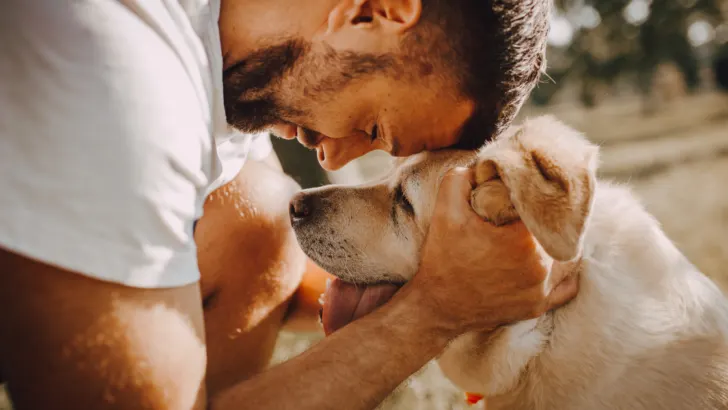
Finally, be sure to consult with your veterinarian before starting any new diet or exercise routine with your dog. They can provide valuable insight into your dog’s individual needs and help you choose the best food and supplements for them.
By following these tips and providing your hiking dog with the proper nutrition and hydration, you can ensure that they stay healthy and happy on the trail.
Resources
- American Hiking Society – https://americanhiking.org/resources-for-hiking-with-dogs/
- REI – https://www.rei.com/learn/expert-advice/hiking-dogs.html
- The Humane Society – https://www.humanesociety.org/resources/hiking-dogs
- Outdoor Dog World – https://outdoordogworld.com/hiking-with-dogs-tips/
Frequently Asked Questions
What are some recommended dog food brands for hiking?
When it comes to choosing dog food for hiking, it’s important to look for high-quality, nutrient-dense options that will provide your dog with the energy they need to tackle the trail. Some popular brands that are great for hiking include Orijen, Taste of the Wild, and Blue Buffalo. However, it’s important to note that every dog is different, so what works for one dog may not work for another.
How much food should I bring for my dog on a hiking trip?
The amount of food you should bring for your dog on a hiking trip will depend on their size, activity level, and the length of the trip. As a general rule, you should plan to bring enough food to last your dog for the entire trip, plus a little extra just in case. It’s also a good idea to gradually increase your dog’s food intake in the days leading up to the trip to help them build up their energy reserves.
What are some lightweight dog food options for backpacking?
If you’re planning a backpacking trip with your dog, you’ll want to look for lightweight options that won’t weigh you down. Some great options include freeze-dried dog food, dehydrated dog food, and high-energy bars designed specifically for dogs. These options are not only lightweight, but they’re also easy to pack and won’t take up too much space in your backpack.
Is it safe to feed my dog while hiking?
Feeding your dog while hiking is generally safe, but it’s important to be mindful of their digestive system. It’s best to feed your dog small meals throughout the day rather than one large meal, as this will help prevent digestive issues. You should also avoid feeding your dog immediately before or after exercise, as this can increase the risk of bloat.
What are some portable dog food options for day hikes?
If you’re going on a shorter day hike with your dog, you may not need to bring a full meal with you. Instead, you can opt for portable options like high-energy dog treats, freeze-dried dog food, or even homemade dog food that you can pack in a small container. Just be sure to bring enough to keep your dog fueled throughout the hike.
How can I ensure my dog stays properly nourished during a long hike?
To ensure your dog stays properly nourished during a long hike, it’s important to provide them with plenty of water and snacks throughout the day. You should also monitor their energy levels and adjust their food intake accordingly. If your dog seems to be struggling, you may need to take a break and give them a chance to rest and refuel.
